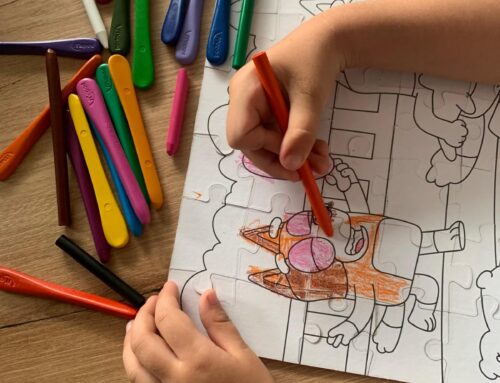Autism Spectrum Disorder (ASD) is a neurodevelopmental condition that affects how individuals interact, communicate, and process information from their environment. This spectrum encompasses a wide variety of manifestations, making each person’s experience unique. In this article, we will explore the main characteristics of autism, the associated challenges, and how a behavioral approach can help us understand and address behaviors related to this diagnosis.
What is Autism Spectrum Disorder (ASD)?
ASD is not a uniform condition. Instead of viewing it as a fixed list of characteristics, it is more helpful to think of it as a spectrum where individuals display strengths and challenges in different combinations. What connects people within the spectrum are certain common patterns in social interaction, behavior, and sensory processing.
Key Characteristics of ASD
- Difficulties in Social Communication: Challenges in understanding and using verbal and nonverbal language in social interactions. These difficulties can lead to communication misunderstandings and challenges in social interaction. Examples include:
- Difficulty initiating or maintaining a conversation.
- Literal interpretation of expressions or metaphors.
- Lack of eye contact or difficulty interpreting facial expressions and emotions.
- Repetitive Behaviors and Restricted Interests: Patterns of repetitive behavior or intense, focused interests. While these behaviors can be sources of comfort and enjoyment, they may also interfere with adapting to new situations. Examples include:
- Repetitive movements such as hand-flapping or body-rocking.
- Fascination with a specific topic, such as trains, animals, or numbers.
- Strict adherence to routines and difficulty coping with unexpected changes.
- Atypical Sensory Processing: Often manifested as unusual reactions to sensory stimulation, either due to hyper-reactivity (excess) or hypo-reactivity (deficiency). These sensory experiences can significantly impact daily well-being and behavior.
- Intense reactions to sounds, lights, or textures.
- Seeking sensory stimuli, such as touching objects or watching bright lights.
- Avoidance of certain stimuli, like clothing tags or foods with specific textures.
Despite these challenges, every person with autism has unique potential. Focusing on their abilities and strengths can help create opportunities to maximize their development and well-being.
Interventions Based on Behavioral Analysis
From a behavioral perspective, an autism diagnosis is not seen as a label that defines the person but as a way to identify observable patterns of behavior that affect their interaction with the environment. This approach emphasizes addressing specific behaviors rather than focusing solely on the diagnosis.
This perspective enables a comprehensive intervention by considering:
- What specific behaviors influence social interaction, learning, or adaptation to the environment, determining whether these should be increased, replaced, or reduced based on individual needs.
- When and where these behaviors occur most frequently and in which contexts the desired behaviors should be developed, analyzing what behaviors are currently taking their place.
- How the environment contributes to maintaining, increasing, or inhibiting these behaviors, and what specific strategies can be implemented to achieve desired goals effectively.
Applied Behavior Analysis (ABA) serves as a key tool in supporting individuals with ASD by personalizing interventions to their specific needs and strengths. This approach aims not only to address challenges but also to enhance the skills that contribute to development and well-being.
Some of the main strategies used in ABA include:
- Identifying positive reinforcers to increase motivation, facilitating the learning of new skills, and promoting engagement in proposed activities.
- Building on the individual’s current abilities, establishing a solid foundation for progress with clear, measurable goals tailored to their developmental level.
- Teaching adaptive skills that directly impact quality of life, such as improving functional communication, fostering independence, and strengthening adaptability across different contexts.
- Reducing dysfunctional behaviors by analyzing and modifying the environmental and social variables that maintain them, achieving respectful and sustainable transformation over time.
This personalized and dynamic approach ensures that interventions are not only effective but also meaningful for individuals with ASD and their families, always respecting their individuality and goals.
Conclusion
Autism is not a barrier to living a fulfilling life; it is a different way of experiencing the world. From a behavioral perspective, the focus is not on “fixing” or “normalizing” individuals with ASD but on understanding their needs, respecting their individuality, and creating environments that foster their development.
At ABAbility, we specialize in designing personalized interventions that not only address the challenges of autism but also amplify each individual’s strengths.
References
- Baio, J., Wiggins, L., Christensen, D. L., et al. (2018). Prevalence of Autism Spectrum Disorder Among Children Aged 8 Years — Autism and Developmental Disabilities Monitoring Network, 11 Sites, United States, 2014. MMWR Surveillance Summaries.
- Lord, C., Elsabbagh, M., Baird, G., & Veenstra-Vanderweele, J. (2018). Autism Spectrum Disorder. The Lancet.
- Schreibman, L. (2000). Intensive Behavioral/Psychoeducational Treatments for Autism: Research Needs and Future Directions. Journal of Autism and Developmental Disorders.
- American Psychiatric Association. (2013). Diagnostic and Statistical Manual of Mental Disorders (5th ed.). Arlington, VA: American Psychiatric Publishing.
- Cooper, J. O., Heron, T. E., & Heward, W. L. (2007). Applied Behavior Analysis (2nd Edition). Pearson.


